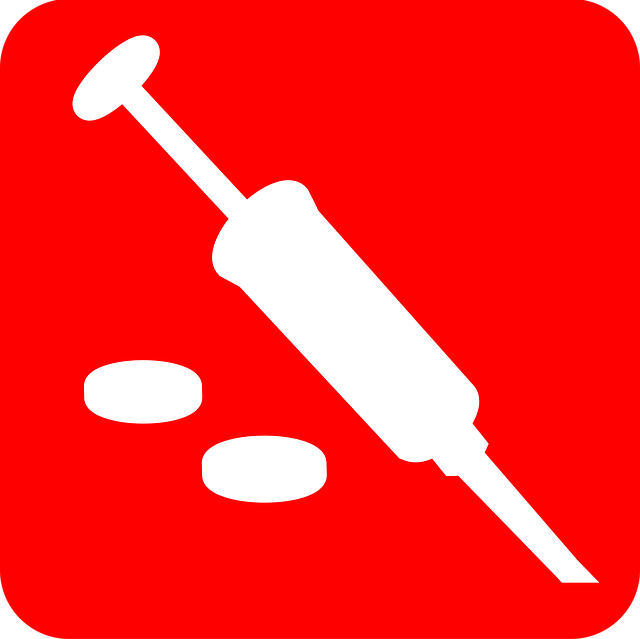Collaborative healthcare practices involving endocrinologists, PCPs, nurse practitioners, and diabetes educators revolutionize Type 2 diabetes management with semaglutide. Understanding and adhering to specific requirements for semaglutide prescription are crucial. This includes assessing patient history, current health, adherence to lifestyle changes and oral meds, HbA1c levels, comorbidities, contraindications, and potential drug interactions. Effective collaboration ensures safe, tailored semaglutide therapy, balancing legal/ethical duties while optimizing patient outcomes through ongoing monitoring and education.
Collaborative healthcare providers are playing an increasingly vital role in the prescriptive process of semaglutide, a game-changer in diabetes management. This article delves into the multifaceted approach required for successful semaglutide prescription, exploring roles and responsibilities within patient care teams. We’ll guide you through evaluating patient suitability, understanding legal considerations, integrating semaglutide into existing plans, monitoring progress, managing side effects, enhancing adherence, and staying updated on guidelines—essential aspects for optimal patient outcomes in the realm of collaborative healthcare.
Understanding Semaglutide: A Collaborative Approach

In the realm of healthcare, collaborative practices have emerged as a game-changer, especially in managing complex conditions like type 2 diabetes. Semaglutide, a novel glucagon-like peptide-1 (GLP-1) receptor agonist, offers a transformative approach to blood sugar control. Its prescription requires a nuanced understanding and collaboration among various healthcare providers.
A successful collaborative strategy involves endocrinologists, primary care physicians, nurse practitioners, and diabetes educators working together. Each member brings unique expertise: endocrinologists provide specialized diabetes care, while primary care physicians oversee overall health. Nurse practitioners offer advanced nursing skills in medication management, and diabetes educators foster patient understanding and self-care abilities. By combining these skills, they navigate the complex landscape of semaglutide therapy, ensuring patient safety and optimal outcomes. This approach also allows for continuous learning and adaptation based on individual patient needs, reflecting the dynamic nature of healthcare.
Roles & Responsibilities in Patient Care Teams

In collaborative healthcare, the patient care team works cohesively to provide comprehensive treatment, with each member contributing unique expertise. When it comes to managing diabetes and considering semaglutide prescription, the team’s roles become even more critical. One key player is the primary care physician (PCP), who oversees the overall treatment plan and coordinates with specialists as needed. They assess the patient’s medical history, conduct regular check-ups, and make crucial decisions regarding medication adjustments.
Nurses and pharmacists also play vital roles. Nurses educate patients on medication use, monitor for adverse effects, and support adherence to the prescribed regimen. Pharmacists review medication interactions, ensure accuracy in dosing, and provide expertise on semaglutide’s pharmacokinetics and potential side effects. Their collaboration ensures that patients receive safe and effective treatments tailored to their individual needs, fulfilling essential requirements for semaglutide prescription.
Evaluating Patient Suitability for Semaglutide Therapy

Evaluating patient suitability is a crucial step in determining whether semaglutide therapy is an appropriate treatment option. Healthcare providers must consider several key factors to ensure that patients meet the requirements for semaglutide prescription. These include assessing the patient’s medical history, current health status, and their ability to adhere to the specific medication regimen required for this injectable treatment.
The evaluation should focus on identifying patients with type 2 diabetes who have not achieved adequate glycemic control through lifestyle modifications and oral medications alone. It involves checking HbA1c levels, assessing comorbidities, and considering any potential contraindications or interactions with other medications the patient may be taking. By thoroughly reviewing these requirements for semaglutide prescription, healthcare providers can make informed decisions, ultimately enhancing patient outcomes.
Prescription Requirements: Legal and Ethical Considerations

Prescribing semaglutide, a medication used in type 2 diabetes management, involves several legal and ethical considerations that collaborative healthcare providers must navigate. Firstly, providers are responsible for ensuring patient eligibility, including assessing their medical history, current medications, and overall suitability for the drug. This process is crucial as semaglutide may not be appropriate for all patients due to potential contraindications.
Additionally, prescribers must adhere to legal guidelines regarding prescription requirements. These include verifying patient identity, obtaining informed consent, documenting the indication for medication, and following local regulations for controlled substance prescribing. Ethical considerations also play a significant role, emphasizing the importance of transparency, patient autonomy, and maintaining confidentiality throughout the prescription process.
Integrating Semaglutide into Existing Treatment Plans

When integrating semaglutide into existing treatment plans, healthcare providers must consider several key factors to ensure safe and effective use. This includes a thorough assessment of the patient’s medical history, current medications, and potential contraindications. Semaglutide prescriptions require a comprehensive understanding of the patient’s overall health picture, as this medication is typically indicated for type 2 diabetes management and weight management.
Collaborative care teams play a vital role in navigating these complex requirements. They must work together to optimize existing regimens, monitor for adverse effects, and provide patient education on proper dosing and administration. By fostering open communication and sharing expertise, healthcare providers can enhance patient outcomes, ensuring that semaglutide complements rather than complicates their treatment plans.
Monitoring Patient Progress: Key Metrics and Adjustments

Effective collaborative healthcare provider roles in semaglutide prescription necessitate robust monitoring of patient progress. This involves tracking key metrics such as weight changes, blood glucose levels, and patient-reported outcomes to assess treatment efficacy and safety. Regular follow-up visits every 4–8 weeks are crucial for adjusting dosages or changing therapies based on individual responses.
Meticulous documentation of these parameters is essential to meet the requirements for semaglutide prescription. Collaborative providers must work in tandem to interpret data, identify trends, and make informed decisions that prioritize patient well-being. This collaborative approach ensures optimal management of type 2 diabetes, enhancing quality of life and outcomes for patients receiving semaglutide therapy.
Addressing Side Effects: Collaborative Problem-Solving

Collaborative healthcare providers play a crucial role in managing side effects associated with semaglutide prescription, employing their expertise and patient-centric approach to navigate these challenges. When patients initiate semaglutide therapy, various side effects may emerge, ranging from gastrointestinal distress to potential hypoglycemic events. These providers are equipped to address these issues through collaborative problem-solving strategies.
By fostering open communication among the multidisciplinary team, including physicians, nurses, and specialists, they can tailor interventions to individual patient needs. This approach ensures that side effect management is holistic, considering not only medical solutions but also psychological support and lifestyle adjustments. Such collaboration is essential for optimizing patient adherence and outcomes, ultimately enhancing the overall effectiveness of semaglutide treatment within the specified requirements for prescription.
Enhancing Patient Adherence through Collaborative Efforts

In the realm of healthcare, collaborative efforts between various providers can significantly enhance patient adherence to treatment plans, especially with complex medications like semaglutide. When it comes to meeting the requirements for semaglutide prescription, a multidisciplinary approach is key. By involving endocrinologists, primary care physicians, and diabetes educators, patients receive comprehensive guidance tailored to their needs. This collaborative strategy ensures that patients understand the importance of consistent dosing and lifestyle adjustments required with semaglutide therapy.
Through regular communication and shared decision-making, healthcare providers can address patient concerns, dispel misconceptions, and offer ongoing support. Such collaborative practices foster a sense of partnership between patients and their care teams, increasing the likelihood of adherence to treatment guidelines. As a result, these coordinated efforts contribute to improved diabetes management and better health outcomes for patients prescribed semaglutide.
Continuing Education: Staying Updated on Semaglutide Guidelines

Staying current with guidelines and best practices is crucial for healthcare providers involved in semaglutide prescription. Collaborative care models require ongoing education to ensure practitioners are equipped with the latest knowledge. This continuous learning process is essential as research evolves, new clinical trials emerge, and treatment protocols develop. Staying updated allows providers to make informed decisions, adapt their practices to benefit patients, and adhere to changing regulations surrounding semaglutide administration.
Professional development opportunities can include attending seminars, webinars, and workshops focused on semaglutide therapy. Additionally, peer-reviewed literature and clinical guidelines from reputable organizations offer valuable insights into the latest research findings and treatment recommendations. By engaging in these educational activities, healthcare providers can fulfill requirements for semaglutide prescription while ensuring they offer their patients the highest quality of care.
